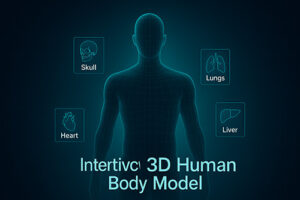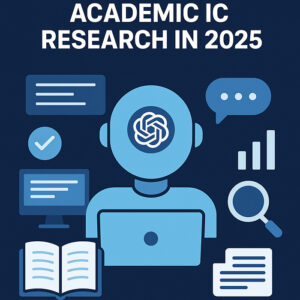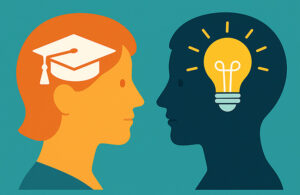Deep Learning: A Comprehensive Guide to Neural Networks and Beyond
Introduction
Deep learning represents one of the most significant advancements in artificial intelligence over the past decade, enabling machines to learn complex patterns from vast amounts of data. Unlike traditional machine learning approaches that require extensive feature engineering, deep learning algorithms automatically discover representations needed for detection or classification directly from raw data. From voice assistants that understand natural language to autonomous vehicles navigating city streets, deep learning has transformed how we interact with technology and solve previously intractable problems.
This comprehensive guide explores the fundamentals, architectures, applications, and future directions of deep learning. We’ll delve into the theoretical underpinnings that make these systems work, examine cutting-edge architectures driving innovation, and investigate real-world applications reshaping industries. Whether you’re a researcher, practitioner, student, or simply curious about this transformative technology, this resource provides a thorough foundation for understanding deep learning’s capabilities, limitations, and potential.
Table of Contents
- Fundamentals of Deep Learning
- Neural Network Basics
- The Deep Learning Revolution
- Convolutional Neural Networks
- Recurrent Neural Networks
- Transformer Architectures
- Generative Models
- Deep Reinforcement Learning
- Training Methodologies
- Hardware and Infrastructure
- Deep Learning Frameworks
- Applications Across Industries
- Challenges and Limitations
- Ethical Considerations
- Future Directions
- Getting Started with Deep Learning
- Conclusion
Fundamentals of Deep Learning
Deep learning is a subset of machine learning that employs neural networks with multiple layers to progressively extract higher-level features from raw input. This hierarchical learning process mimics how the human brain processes information, building increasingly complex representations from simpler ones.
From Machine Learning to Deep Learning
Traditional machine learning relies on manually engineered features that transform raw data into a format suitable for learning algorithms. This process, known as feature engineering, requires domain expertise and often becomes a bottleneck in system development.
Deep learning automates this feature extraction process through representation learning:
Representation Learning: The system automatically discovers representations needed for detection or classification from raw data. Each layer in a deep network transforms its input into a slightly more abstract and composite representation.
Hierarchical Feature Learning: Lower layers capture basic elements (like edges in images), while higher layers combine these elements into more complex features (like textures, parts, and eventually entire objects).
For example, in image recognition:
- First layers detect edges and simple textures
- Middle layers identify shapes and parts
- Later layers recognize complete objects and scenes
This progression from simple to complex features enables deep learning models to tackle problems involving high-dimensional data with intricate patterns.
The Mathematics Behind Deep Learning
Several mathematical concepts underpin deep learning’s effectiveness:
Linear Algebra: Neural networks fundamentally operate on vectors, matrices, and tensors. Operations like matrix multiplication form the backbone of how information flows through networks.
Calculus: Training neural networks relies on optimization through gradient descent, which uses derivatives to iteratively adjust parameters.
Probability Theory: Many deep learning models incorporate probabilistic elements, from the stochastic nature of training to explicit probabilistic outputs.
Information Theory: Concepts like entropy and cross-entropy provide ways to measure how effectively models capture and represent information.
The Role of Data
Deep learning’s remarkable performance stems largely from its ability to leverage large datasets:
Data Dependency: Unlike some traditional algorithms, deep learning models typically require substantial amounts of data to generalize effectively.
Data Quality: The performance of deep learning systems depends heavily on the quality, diversity, and representativeness of training data.
Data Augmentation: Techniques that artificially expand training datasets through transformations (like rotation or scaling of images) help improve model robustness.
As we discussed in our Data Science Fundamentals article, the relationship between data quality, quantity, and model performance remains a central consideration in deep learning research.
For a thorough introduction to deep learning fundamentals, visit Deep Learning Book by Ian Goodfellow, Yoshua Bengio, and Aaron Courville, a comprehensive free online resource.
Neural Network Basics
Neural networks serve as the foundational architecture for deep learning systems. Understanding these building blocks provides essential context for more complex models and applications.
The Artificial Neuron
The basic computational unit of a neural network is the artificial neuron, inspired by biological neurons:
Inputs and Weights: Each neuron receives multiple input signals, each assigned a weight indicating its relative importance.
Weighted Sum: The neuron computes a weighted sum of its inputs.
Activation Function: The weighted sum passes through an activation function that introduces non-linearity, enabling the network to learn complex patterns.
Common activation functions include:
Sigmoid: Maps input to a value between 0 and 1, historically popular but prone to vanishing gradient problems.
Tanh (Hyperbolic Tangent): Maps input to a value between -1 and 1, centered around zero.
ReLU (Rectified Linear Unit): Returns the input if positive, otherwise returns zero. Computationally efficient and helps address vanishing gradient issues.
Leaky ReLU: Modifies ReLU to allow a small, non-zero gradient when the unit is inactive.
Softmax: Used in output layers for multi-class classification, converting a vector of values into a probability distribution.
Network Architecture
Neural networks organize neurons into layers:
Input Layer: Receives the raw data (e.g., pixel values of an image).
Hidden Layers: Intermediate layers where most computation occurs. The “depth” in deep learning refers to the number of these hidden layers.
Output Layer: Produces the final prediction or classification.
Fully Connected (Dense) Layers: Each neuron connects to every neuron in the previous and subsequent layers.
Forward Propagation
Information flows through the network in a forward pass:
- Input data enters the network through the input layer
- Each hidden layer receives outputs from the previous layer, applies weights, and passes results through activation functions
- The output layer generates predictions
Mathematically, for each layer:
z = W·a + b
a = f(z)
Where:
Wis the weight matrixais the activation from the previous layerbis the bias vectorfis the activation function
Backpropagation and Learning
Neural networks learn through backpropagation, which adjusts weights to minimize prediction errors:
Loss Function: Measures the difference between predicted and actual outputs. Common loss functions include:
- Mean Squared Error for regression problems
- Cross-Entropy Loss for classification tasks
Gradient Descent: An optimization algorithm that iteratively adjusts weights in the direction that reduces the loss.
Backpropagation: Efficiently calculates gradients by propagating them backwards through the network, applying the chain rule of calculus.
Learning Rate: Controls the size of weight updates, balancing between convergence speed and stability.
The Vanishing and Exploding Gradient Problems
As networks grow deeper, they can encounter:
Vanishing Gradients: Gradients become extremely small as they’re propagated back through many layers, preventing effective learning in early layers.
Exploding Gradients: Gradients become extremely large, causing unstable updates and training failure.
Solutions include:
- Careful weight initialization (e.g., Xavier/Glorot initialization)
- Batch normalization
- Residual connections (skip connections)
- Alternative activation functions like ReLU
For hands-on tutorials implementing basic neural networks, visit TensorFlow’s neural network tutorials or PyTorch’s deep learning tutorials.
The Deep Learning Revolution
The transition from theoretical possibility to practical reality in deep learning wasn’t sudden but resulted from several converging factors that created a perfect storm for neural network adoption.
Historical Context
Neural networks have existed conceptually since the 1940s, with significant developments including:
Perceptron (1958): Frank Rosenblatt’s perceptron sparked initial enthusiasm for neural networks.
Backpropagation (1986): The formal description of the backpropagation algorithm by Rumelhart, Hinton, and Williams provided an efficient training mechanism.
Early Neural Networks (1980s-1990s): Systems like LeNet for digit recognition demonstrated promise but faced computational limitations.
Despite these advances, neural networks remained relatively niche until the 2010s. The field experienced several “AI winters” when initial excitement gave way to disappointment as practical limitations became apparent.
Breakthrough Moments
Several key events marked the beginning of the deep learning revolution:
ImageNet Competition (2012): AlexNet, developed by Alex Krizhevsky, Ilya Sutskever, and Geoffrey Hinton, dramatically outperformed traditional computer vision approaches, reducing error rates from 26% to 15%.
Speech Recognition Advances (2011-2013): Deep neural networks at Microsoft, Google, and IBM achieved unprecedented accuracy in automatic speech recognition.
AlphaGo Defeats Lee Sedol (2016): DeepMind’s AlphaGo combined deep learning with reinforcement learning to defeat a world champion Go player, a feat previously thought decades away.
Enablers of the Revolution
Three primary factors enabled the deep learning breakthrough:
Data Abundance: The digitization of society created unprecedented amounts of data:
- Billions of images on the internet
- Vast text corpora from websites and digitized books
- Sensor data from smartphones and IoT devices
- User interaction data from online services
Computational Power: Hardware advancements dramatically increased processing capabilities:
- Graphics Processing Units (GPUs) provided massive parallelization
- Specialized AI accelerators like Google’s Tensor Processing Units (TPUs)
- Cloud computing made these resources widely accessible
Algorithmic Innovations: Researchers developed techniques to train deeper and more effective networks:
- ReLU activations mitigated vanishing gradient problems
- Dropout prevented overfitting
- Batch normalization stabilized training
- Residual connections enabled training of very deep networks
As we’ve discussed in our Evolution of Machine Learning blog post, these developments created a virtuous cycle: better algorithms enabled work with more data, which drove hardware development, which in turn enabled more sophisticated algorithms.
For a comprehensive history of deep learning, refer to The Deep Learning Revolution by Terrence J. Sejnowski, which chronicles this remarkable transformation.
Convolutional Neural Networks
Convolutional Neural Networks (CNNs) revolutionized computer vision by incorporating architectural principles specifically designed for processing grid-like data such as images. Their structure is inspired by the organization of the animal visual cortex, where individual neurons respond to stimuli only in a restricted region of the visual field.
Core Architectural Components
CNNs consist of several specialized layer types:
Convolutional Layers: The fundamental building block that gives CNNs their name.
- Apply filters (kernels) across the input to detect spatial patterns
- Share parameters across the entire input, drastically reducing model size
- Preserve spatial relationships between pixels
- Each filter produces a feature map highlighting where certain patterns occur
Pooling Layers: Reduce the spatial dimensions of feature maps.
- Max pooling takes the maximum value in each pooling window
- Average pooling takes the average value
- Provides a form of translation invariance
- Reduces computation and helps prevent overfitting
Fully Connected Layers: Typically appear in the final stages of the network.
- Connect every neuron to all neurons in the previous layer
- Integrate information from the entire image for final predictions
Data Flow Through a CNN
Understanding the progression of information through a CNN helps visualize its operation:
Input: A raw image represented as a matrix of pixel values (e.g., 224×224×3 for a color image)
Convolution: Filters slide across the image, performing element-wise multiplication and summation to produce feature maps that highlight patterns like edges, textures, and shapes
Activation: Non-linear functions (typically ReLU) are applied to the feature maps to introduce non-linearity
Pooling: Downsamples the feature maps to reduce dimensions while preserving important information
Repeating Layers: Multiple convolutional, activation, and pooling layers extract increasingly complex features
Flattening: The final feature maps are transformed into a one-dimensional vector
Fully Connected Layers: Process the flattened vector to make final predictions
Milestone CNN Architectures
Several landmark architectures have driven CNN evolution:
LeNet-5 (1998):
- Pioneered by Yann LeCun for handwritten digit recognition
- Relatively simple structure with two convolutional layers
- Demonstrated the effectiveness of weight sharing and local receptive fields
AlexNet (2012):
- First deep CNN to win the ImageNet competition
- 8 layers (5 convolutional, 3 fully connected)
- Introduced ReLU activations, dropout, and data augmentation
- Used GPU acceleration for training
VGG (2014):
- Emphasized simplicity and depth with 16-19 layers
- Used small 3×3 convolutions throughout
- Demonstrated the importance of network depth for performance
GoogLeNet/Inception (2014):
- Introduced “inception modules” with parallel convolution paths
- Efficiently used computational resources with 1×1 convolutions
- 22 layers while using 12× fewer parameters than AlexNet
ResNet (2015):
- Introduced residual connections (skip connections)
- Enabled training of extremely deep networks (up to 152 layers)
- Revolutionized deep architecture design
- Residual blocks learn residual functions with reference to layer inputs
EfficientNet (2019):
- Used neural architecture search and compound scaling
- Balanced network depth, width, and resolution
- Achieved state-of-the-art performance with fewer parameters
Advanced CNN Concepts
Modern CNNs incorporate several advanced techniques:
Depthwise Separable Convolutions:
- Factorize standard convolutions into depthwise and pointwise operations
- Dramatically reduce computation while maintaining performance
- Used in efficient architectures like MobileNet
Dilated/Atrous Convolutions:
- Insert “holes” in the convolutional filters
- Increase receptive field without increasing parameters
- Particularly useful for dense prediction tasks like segmentation
Attention Mechanisms:
- Allow the network to focus on relevant portions of the input
- Channel attention recalibrates feature importance
- Spatial attention highlights informative regions
- Used in architectures like SENet (Squeeze-and-Excitation Networks)
For hands-on tutorials and implementations of various CNN architectures, explore PyTorch’s torchvision models or TensorFlow’s Keras Applications.
Recurrent Neural Networks
Recurrent Neural Networks (RNNs) extend the capabilities of traditional neural networks to handle sequential data where context and order matter. This ability to maintain state and process sequences of variable length makes RNNs particularly well-suited for tasks involving time series, natural language, and other sequential phenomena.
The Recurrent Neuron
Unlike standard feedforward networks, RNNs introduce feedback connections:
Internal State: RNN neurons maintain a hidden state that acts as a “memory” of previous inputs.
Feedback Loops: The hidden state from one time step becomes input for the next time step, creating a form of memory.
Parameter Sharing: The same weights are applied at each time step, allowing the network to process sequences of any length.
Mathematically, at each time step t:
h_t = tanh(W_hx · x_t + W_hh · h_{t-1} + b_h)
y_t = W_yh · h_t + b_y
Where:
h_tis the hidden state at time tx_tis the input at time tW_hx,W_hh, andW_yhare weight matricesb_handb_yare bias vectors
Vanilla RNN Limitations
Basic RNNs face significant challenges:
Vanishing Gradients: When backpropagating through many time steps, gradients can become extremely small, preventing effective learning of long-range dependencies.
Exploding Gradients: Conversely, gradients can grow exponentially, causing unstable training.
Short-term Memory: Due to these gradient issues, vanilla RNNs struggle to capture dependencies over long sequences.
Long Short-Term Memory (LSTM)
LSTM networks were designed to address these limitations:
Memory Cell: A separate cell state runs through the network, providing a pathway for information to flow unchanged.
Gating Mechanisms: Three gates control information flow:
- Forget Gate: Decides what information to discard from the cell state
- Input Gate: Controls what new information to store in the cell state
- Output Gate: Determines what to output based on the cell state
Long-term Dependencies: The cell state and gating mechanisms allow LSTMs to learn relationships over many time steps.
Mathematically, LSTMs use multiple interacting components:
f_t = σ(W_f · [h_{t-1}, x_t] + b_f) # Forget gate
i_t = σ(W_i · [h_{t-1}, x_t] + b_i) # Input gate
C̃_t = tanh(W_C · [h_{t-1}, x_t] + b_C) # Candidate cell state
C_t = f_t * C_{t-1} + i_t * C̃_t # Cell state update
o_t = σ(W_o · [h_{t-1}, x_t] + b_o) # Output gate
h_t = o_t * tanh(C_t) # Hidden state
Gated Recurrent Unit (GRU)
GRUs simplify LSTMs while retaining their benefits:
Reduced Gates: GRUs use only two gates (reset and update gates) instead of three.
No Separate Cell State: GRUs merge the cell and hidden states.
Computational Efficiency: The simpler architecture requires fewer parameters and computations.
Comparable Performance: Despite simplification, GRUs often perform similarly to LSTMs.
Bidirectional RNNs
Bidirectional RNNs process sequences in both directions:
Forward Layer: Processes the sequence from start to end.
Backward Layer: Processes the sequence from end to start.
Combined Context: Outputs from both directions are concatenated or otherwise combined.
Enhanced Context: This approach provides each output with context from both past and future time steps, particularly valuable for tasks like speech recognition and natural language processing.
Applications of RNNs
RNNs excel in various sequential data tasks:
Natural Language Processing:
- Language modeling
- Machine translation
- Sentiment analysis
- Text generation
Speech Recognition:
- Converting spoken language to text
- Speaker identification
Time Series Analysis:
- Stock price prediction
- Weather forecasting
- Sensor data analysis
Music Generation:
- Creating musical sequences with learned patterns and structure
For practical RNN implementations and tutorials, explore TensorFlow’s RNN guide or PyTorch’s RNN tutorials.
Transformer Architectures
Transformer models have revolutionized sequence processing tasks since their introduction in 2017, overcoming limitations of recurrent architectures through a mechanism called self-attention. Their parallel processing capabilities and ability to capture long-range dependencies have made them the dominant architecture for natural language processing and increasingly important in computer vision.
The Attention Mechanism
At the heart of transformers lies the attention mechanism:
Query, Key, Value Framework:
- Each position in a sequence generates three vectors: query (Q), key (K), and value (V)
- Attention weights are computed by comparing a query with all keys
- The output is a weighted sum of values, where weights are determined by query-key similarity
Self-Attention: Allows each position to attend to all positions in the sequence, capturing relationships regardless of distance.
Multi-Head Attention: Performs attention multiple times in parallel with different learned projections, allowing the model to jointly attend to information from different representation subspaces.
Mathematically, scaled dot-product attention is computed as:
Attention(Q, K, V) = softmax(QK^T / √d_k)V
Where d_k is the dimension of the key vectors.
Transformer Architecture
The complete transformer architecture consists of several components:
Encoder:
- Multiple identical layers stacked on top of each other
- Each layer has two sub-layers: multi-head self-attention and position-wise fully connected feed-forward network
- Residual connections and layer normalization around each sub-layer
Decoder:
- Similar to encoder but with an additional attention layer that attends to the encoder’s output
- Masked self-attention in the first sub-layer prevents attending to future positions
Positional Encoding: Since transformers process all elements simultaneously (unlike RNNs), positional encodings inject information about token positions.
Feed-Forward Networks: Each position is processed independently with the same fully connected network.
Key Advantages Over RNNs
Transformers offer several benefits compared to recurrent architectures:
Parallelization: Process entire sequences at once rather than sequentially, enabling much faster training on modern hardware.
Global Context: Directly model relationships between any positions in the sequence, regardless of distance.
Reduced Vanishing Gradients: No recurrent connections mean gradients don’t need to flow through time steps.
Scalability: Can effectively scale to much larger models and datasets.
Milestone Transformer Models
Several landmark transformer models have driven progress in NLP and beyond:
Original Transformer (2017):
- Introduced in “Attention is All You Need” paper by Vaswani et al.
- Demonstrated superior performance on machine translation tasks
BERT (2018):
- Bidirectional Encoder Representations from Transformers
- Pre-trained on massive text corpora using masked language modeling
- Fine-tuned for specific downstream tasks
- Revolutionized NLP performance across multiple benchmarks
GPT (Generative Pre-trained Transformer) Series:
- Unidirectional (autoregressive) transformer models
- Pre-trained on increasingly large datasets
- GPT-3 (175B parameters) demonstrated remarkable few-shot learning abilities
- GPT-4 showed even more advanced capabilities and multimodal understanding
T5 (Text-to-Text Transfer Transformer):
- Unified approach framing all NLP tasks as text-to-text problems
- Simplified fine-tuning across diverse tasks
Vision Transformer (ViT):
- Applied transformers to image classification
- Split images into patches treated as tokens
- Demonstrated that transformers can match or exceed CNNs for vision tasks
Efficiency Innovations
Several approaches address the computational challenges of transformers:
Sparse Attention: Models like Longformer and BigBird use sparse attention patterns to reduce the quadratic complexity of self-attention.
Linear Attention: Reformulations of attention to achieve linear complexity, as in Linformer and Performer.
Parameter Sharing: Models like ALBERT share parameters across layers to reduce memory requirements.
Distillation: Smaller models like DistilBERT learn from larger ones, preserving most of the performance with fewer parameters.
For hands-on experience with transformers, explore the Hugging Face Transformers library, which provides implementations of numerous transformer models with easy-to-use interfaces.
Generative Models
Generative models represent a powerful class of deep learning approaches that learn to generate new data resembling their training distribution. Unlike discriminative models that focus on classification or prediction tasks, generative models capture the underlying structure of data, enabling them to create novel samples or complete partial observations.
Variational Autoencoders (VAEs)
VAEs combine neural networks with principles from Bayesian inference:
Architecture:
- Encoder network maps input data to a distribution in latent space
- Latent variables are sampled from this distribution
- Decoder network reconstructs the input from the latent sample
Probabilistic Foundation:
- Models data as being generated from latent variables with a prior distribution
- Uses variational inference to approximate the true posterior distribution
Training Objective:
- Reconstruction loss ensures decoded outputs match inputs
- KL divergence regularizes the latent distribution toward a standard normal prior
- Combined loss function: L = Reconstruction_Loss + β·KL_Divergence
Properties:
- Learns continuous, structured latent space
- Enables interpolation between samples
- Provides a principled way to sample new data
- Often produces somewhat blurry outputs due to the probabilistic nature
Generative Adversarial Networks (GANs)
GANs introduced an adversarial training paradigm:
Two-Network Architecture:
- Generator creates samples from random noise
- Discriminator distinguishes between real and generated samples
Adversarial Training:
- Generator tries to fool the discriminator
- Discriminator tries to correctly identify real vs. fake
- Zero-sum game formulation creates a powerful learning signal
Key Innovations:
- DCGAN: Applied convolutional architectures to stabilize training
- Conditional GAN: Enables conditioning generation on class labels or other attributes
- CycleGAN: Learned unpaired domain translation (e.g., horses to zebras)
- StyleGAN: Used style-based generator with progressive growing for unprecedented image quality
- BigGAN: Scaled up GANs with larger batch sizes and architectural improvements
Challenges:
- Training instability (mode collapse, non-convergence)
- Difficult evaluation metrics
- Potential memorization of training examples
Diffusion Models
Diffusion models have recently emerged as a powerful alternative:
Process-Based Approach:
- Forward process gradually adds noise to data
- Reverse process learns to denoise step by step
- Based on principles from non-equilibrium thermodynamics
Training Methodology:
- Train a neural network to predict noise at each step
- Sampling involves iterative denoising from pure noise
Key Advantages:
- Stable training compared to GANs
- High-quality and diverse outputs
- Controllable generation through guidance techniques
- Strong performance across domains (images, audio, 3D)
Notable Examples:
- DALL-E 2 and DALL-E 3: Text-to-image generation
- Stable Diffusion: Open-source text-to-image model
- AudioLM: Speech and audio generation
Flow-Based Models
Flow models use invertible transformations to map between data and latent space:
Key Properties:
- Exact likelihood computation (unlike VAEs and GANs)
- Invertible by design, enabling both generation and inference
- Composed of a sequence of invertible transformations
Challenges:
- Architectural constraints due to invertibility requirement
- Computationally intensive training
Examples:
- RealNVP
- Glow
- Flow++
Applications of Generative Models
Generative models enable numerous applications:
Content Creation:
- Artwork generation
- Music composition
- Text generation
- Virtual world creation
Data Augmentation:
- Generating additional training examples
- Balancing imbalanced datasets
Anomaly Detection:
- Identifying samples that deviate from the learned distribution
Missing Data Imputation:
- Completing partial observations based on learned patterns
Drug Discovery:
- Generating molecular structures with desired properties
For an in-depth exploration of generative models and their implementations, visit Papers with Code’s generative models section, which tracks state-of-the-art approaches.
Deep Reinforcement Learning
Deep Reinforcement Learning (DRL) combines reinforcement learning’s ability to learn from environmental feedback with deep learning’s capacity to process high-dimensional data. This powerful combination has enabled breakthroughs in complex sequential decision problems from game playing to robotics.
Fundamentals of Reinforcement Learning
Reinforcement learning is framed around an agent interacting with an environment:
Key Components:
- Agent: The learning entity making decisions
- Environment: The world the agent interacts with
- State (S): The current situation in the environment
- Action (A): Choices the agent can make
- Reward (R): Feedback signal indicating action quality
- Policy (π): The agent’s strategy mapping states to actions
- Value Function (V): Expected cumulative reward from a state
- Q-Function: Expected cumulative reward from a state-action pair
The RL Objective: Learn a policy that maximizes expected cumulative rewards over time.
Deep Q-Networks (DQN)
DQN represented a watershed moment for deep reinforcement learning:
Neural Network Approximation:
- Uses deep neural networks to approximate the Q-function
- Maps states directly to action values without manual feature engineering
- Handles high-dimensional input spaces like images
Key Innovations:
- Experience Replay: Stores and randomly samples past experiences to break correlations in sequential data
- Target Networks: Uses a separate network for generating targets to stabilize training
- Reward Clipping: Normalizes rewards to improve learning stability
Breakthrough Results:
- Mastered multiple Atari games from raw pixel inputs
- Achieved superhuman performance without game-specific knowledge
Policy Gradient Methods
Policy gradient approaches directly optimize policy parameters:
Direct Policy Representation:
- Neural network outputs action probabilities or deterministic actions
- Updates parameters to increase the likelihood of actions that lead to higher rewards
Key Algorithms:
- REINFORCE: Basic policy gradient method with high variance
- Advantage Actor-Critic (A2C/A3C): Uses a critic network to estimate advantages, reducing variance
- Proximal Policy Optimization (PPO): Clips the policy update to prevent destructively large changes
- Trust Region Policy Optimization (TRPO): Enforces policy updates within a trust region for stability
Applications:
- Robot locomotion and manipulation
- Continuous control problems
- Tasks with complex, continuous action spaces
Deep Deterministic Policy Gradient (DDPG)
DDPG extends DQN to continuous action spaces:
Actor-Critic Architecture:
- Actor network determines actions given states
- Critic network evaluates those actions
Off-Policy Learning:
- Learns from stored experiences rather than only current interactions
- Enables sample-efficient learning
Applications:
- Robotic control
- Autonomous driving
- Physical simulations
Combining Model-Free and Model-Based Approaches
Recent advances integrate learning environment models with direct policy optimization:
World Models:
- Learn a model of environment dynamics
- Plan and simulate within the learned model
- Reduce sample complexity by learning from simulated experiences
Model-Based Policy Optimization:
- Use model for short-horizon planning
- Improve policy based on model predictions
- Balance model exploitation with real-world exploration
MuZero:
- Learns implicit environment models focused on decision-relevant aspects
- Combines planning with learning from experience
- Achieves state-of-the-art performance across diverse domains
Multi-Agent Reinforcement Learning
Multi-agent settings introduce additional complexity:
Challenges:
- Non-stationarity as agents simultaneously learn
- Coordination among agents
- Competition versus cooperation
Approaches:
- Centralized training with decentralized execution
- Meta-learning for adaptation to different opponents
- Emergent communication protocols between agents
Real-World Applications
DRL has demonstrated success in numerous domains:
Games:
- Chess, Go, and Shogi (AlphaZero)
- StarCraft II and Dota 2
- Poker and other imperfect information games
Robotics:
- Dexterous manipulation
- Legged locomotion
- Autonomous navigation
Resource Management:
- Data center cooling optimization
- Traffic light control
- Manufacturing scheduling
Healthcare:
- Treatment regimen optimization
- Personalized medicine
- Clinical trial design
For practical implementations and tutorials, explore OpenAI’s Spinning Up in Deep RL, which provides accessible educational resources for DRL beginners.
Training Methodologies
Effective training methodologies are crucial for developing successful deep learning models. Over time, researchers have developed sophisticated approaches to improve training stability, efficiency, and generalization performance.
Optimization Algorithms
The choice of optimization algorithm significantly impacts training dynamics:
Stochastic Gradient Descent (SGD):
- Updates parameters using gradients computed on small batches
- Simple but often slow convergence
- Noisy updates can help escape local minima
Momentum Methods:
- Incorporates information from previous gradients
- Accelerates convergence and smooths optimization
- Helps navigate narrow valleys in the loss landscape
Adaptive Methods:
- Adam: Combines momentum with per-parameter learning rates
- RMSProp: Adapts learning rates based on recent gradient magnitudes
- AdamW: Adam with decoupled weight decay for better regularization
Learning Rate Schedules:
- Step Decay: Reduces learning rate at predetermined intervals
- Cosine Annealing: Smoothly decreases learning rate following a cosine curve
- Warm Restarts: Periodically resets learning rate to encourage exploration of different regions
Regularization Techniques
Regularization prevents overfitting and improves generalization:









